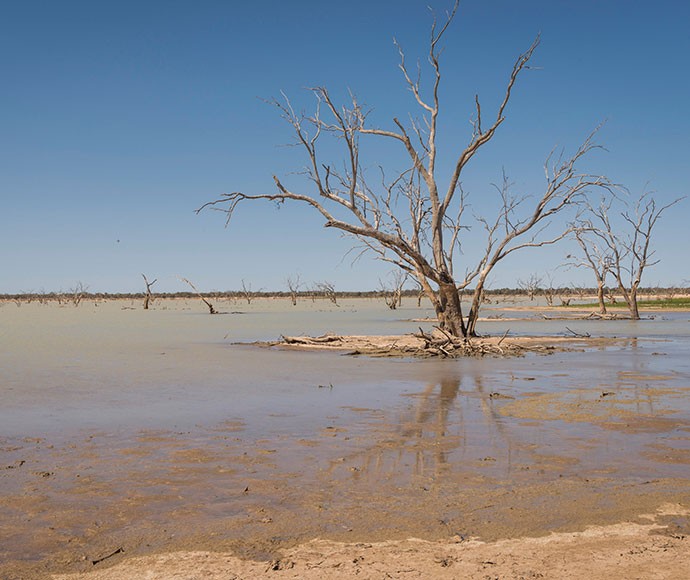Lake Pinaroo is in Sturt National Park near Tibooburra in the north-west corner of New South Wales. It is within the Lake Eyre drainage division.
When full, the lake is attractive to visitors as it provides a contrast to the arid landscapes in the rest of the national park. It also provides opportunities to see many species of waterbirds and large flocks of unique desert birds such as budgerigars.

Lake Pinaroo became a Ramsar site in 1996.
Why these wetlands were listed as a Ramsar site
Countries that sign up to the Ramsar Convention can nominate sites to be listed as Wetlands of International Importance (Ramsar sites). The site must meet at least one of 9 internationally accepted criteria.
Lake Pinaroo was listed as a Ramsar site in 1996 because it meets the following criteria.
Criterion 1: Representative or unique wetlands
Lake Pinaroo is the largest terminal basin within the NSW part of the Simpson–Strzelecki Dunefields bioregion. A terminal basin retains water because it has no outflows to other bodies of water such as rivers or the ocean.
Lake Pinaroo is an ephemeral wetland that is subject to erratic flooding and extended dry periods. Once full, however, it can take up to 6 years to dry out.
Criterion 2: Threatened species or ecological communities
This Ramsar site supports threatened species, including the following:
Criterion 3: Populations of plants and/or animals important for maintaining biodiversity of a particular bioregion
Lake Pinaroo is important for supporting plants and animals in the arid zone of New South Wales. It holds water much longer than any other wetland within the region, providing breeding habitat for up to 61 species of waterbird.
It also provides an important non-breeding refuge for birds that may have bred on other wetlands, particularly interdune swamps that hold water only for relatively short periods (up to 6 months).
Criterion 4: Supports species at a critical stage of their life cycle or provides refuge in adverse conditions
Lake Pinaroo provides a refuge for plants and animals in the surrounding areas during drought because it retains water for long periods. It is also an important stop-over site for migratory wading birds listed under international agreements. These birds include the black-tailed godwit, common greenshank, marsh sandpiper and red-necked stint.
How the site is managed
Management of this Ramsar site is guided by the following documents:
- the site’s Ramsar information sheet
- its ecological character description
- a plan of management for Sturt National Park.
Threats to the Ramsar site
The main threats to this site’s ecological character include:
- introduced plants such as athel pine and noogoora burr
- introduced animals such as rabbits and goats
- climate change.